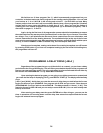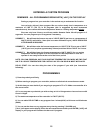
16
8) REMEMBER - The furnace must be attended for the first hour so that the wax tray can be
removed (the use a of Steam Wax Eliminator will eliminate this). NOTE: FOR SAFETY REASONS -
AN OPERATOR SHOULD BE IN ATTENDANCE AT ALL TIME.
9) All times are entered as follows:
For 30 minutes Press 30 Display shows 00.30
For 1 hr. 15 min. Press 115 Display shows 01.15
For 2 hr. 45 min. Press 245 Display shows 02.45
* It is not necessary to put in the decimal.
Your WW Computerized Programmer uses a RAMP/HOLD method of programming. It can
handle as many as 20 segments of time and temperature. Each segment raises or lowers the
temperature and holds it for the length of time you specify. Most burnout programs use only 3
segments, but you have the capability of programming 20 segments.
Each segment is controlled by:
A) HEATING RATE [ rA ]
B) TEMPERATURE [
°
°°
°
F ] or [
°
°°
°
C ]
C) TIME [ HD ]
In other words, furnace temperature can be brought up from ambient to 300 °
°°
°F in 15
minutes or over a period of several hours. This is governed by the RATE [ rA ].
To figure the HEATING RATE, 3 variables must be considered:
1) The ending temperature desired.
2) The starting temperature.
3) The length of time that this rate should take.
For example: If we want to heat a 300 °
°°
°F furnace to 1350 °
°°
°F over a 6 hour period, we would
calculate as follows:
ENDING TEMPERATURE (
°
°°
°
F).. ............ ............1350
STARTING TEMPERATURE (
°
°°
°
F) .......... ............-300
DIFFERENCE (
°
°°
°
F) ........ ............ ............ ............1050
DIVIDE THE TEMPERATURE DIFFERENCE.....1050
1050 1050
BY THE NUMBER OF HOURS. ............ ............ ... 6 5 3
TO GET DEGREES PER HOUR ............ ............ ..... .175 210 350
We have illustrated above how to figure the rate for 5 hours and for 3 hours. Of course, to
decrease the temperature, we would simply subtract the ending temperature from the starting
temperature (in other words - reverse the procedure). Also, a decreasing rate is limited by how
long it takes for a heated mass to cool when the heating elements are turned off (in other words,
the larger the flask, the longer it takes to cool).


















